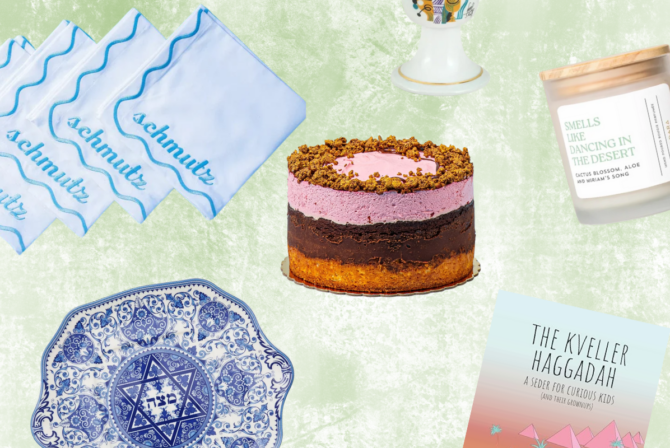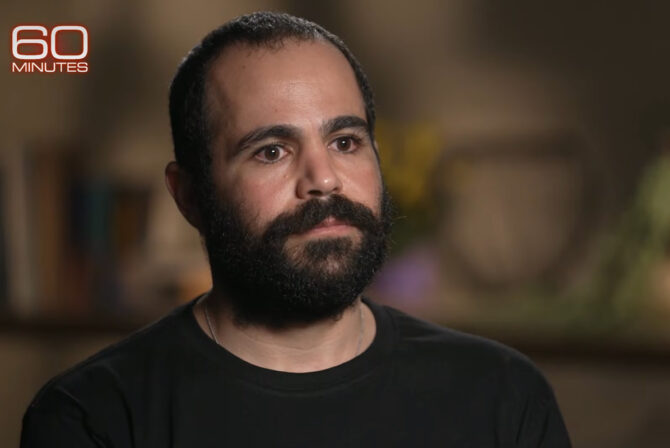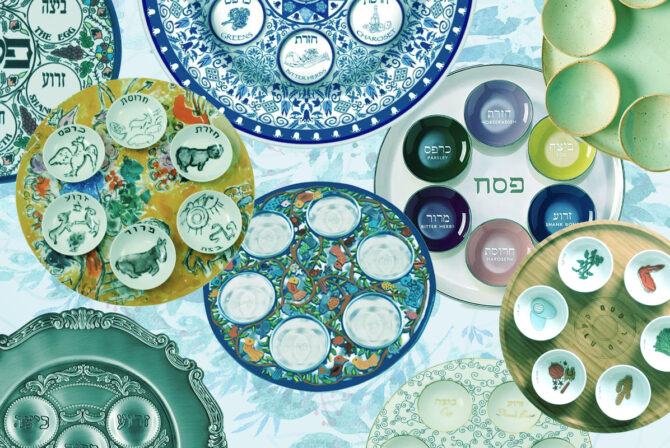Excerpted by permission from “My Jewish Year: 18 Holidays, One Wondering Jew,” Copyright © 2017 by Abigail Pogrebin, published by Fig Tree Books LLC.
My two childhood seders were warm but uninspiring. At my cousin Danny’s on Long Island, I imbibed peanuts from the bar bowl so I wouldn’t be starving while we slogged through the Haggadah. At my Aunt Betty’s in Larchmont, we inverted the salt shaker into the matzah ball soup so it would have some flavor. There was little spontaneity as we recited pages of text. The only suspense was who would be asked to read aloud.
So I’ve tried, in the years since inheriting seder-duty, to introduce at least one activity that captures the children’s attention so they become integral players in the entire evening—not just to perk up during the four questions and “Dayenu,” the centerpiece song that means “It would have been enough.”
One year, I invited the kids to each prepare a section of the seder (the four children, the ten plagues) so they could explain it in a format of their choosing: poem, song, rap, PowerPoint, iMovie, art. Another year, I put each of the seder’s 15 steps (composed by Talmudic scholars in the eleventh century) on individual index cards with two-sided velcro, shuffled them, and asked the kids to work together to put them in the right order on a poster board I had bought (and decorated) from Kinko’s. As the kids matured, I made these exercises more challenging—putting debate topics under their plates and giving them each one minute to argue their side. They loved the gamesmanship, and I loved seeing them own the story enough to dispute it. Example:
Resolution for Ethan (nephew) to argue: “Resolved: Pharaoh can’t be blamed entirely for sending each plague, because according to the Torah, God kept ‘ hardening’ Pharaoh’s heart.”
Resolution for Ben (son) to counterargue: “Resolved: Pharaoh should be blamed entirely for sending each plague because he could have done the right thing when Moses first asked.”
This year, my teenage daughter, Molly, has decided to take on the matzah ball soup assignment, and she chooses a recipe from Joan Nathan’s “Jewish Cooking in America.” Molly has always been far more at ease in the kitchen than I, and after she shops for all her ingredients, it’s strangely comforting to watch her mash the matzah meal, egg, and dill as I sit nearby at the kitchen table, preparing the seder ceremony on my laptop. We’re often a team, whether we’re choosing her brother’s Hanukkah gifts and wrapping them, or setting a birthday table with confetti and silly hats. She’s a celebrator and an organizer who cares about marking things in a big way. Observing her efficiency and energy, I am reassured that she will carry on the holidays when I’m gone.
As Molly chops, mixes, and boils, I put three index cards under each plate, knowing I plan to pose three hopefully provocative questions at four different junctures in the seder, all of which the guests will answer anonymously and place in a bowl. The plan is to read them aloud without knowing whose answers are whose. I figure it will be a safe way to be honest, not to mention a chance to get to know some of the seder-themed truths in the room.
The Haggadah I’ve used for the last three years is homemade—a collection of questions rather than readings, again with the intention of keeping kids engaged. When kids simply recite, they zone out. I know I did. So I’ve assembled a Haggadah that meets all the seder requirements, while inviting constant participation.
The evening arrives and we begin with our usual hugging and milling around, catching up loudly over wine and slivovitz, which is a tradition I stole from my sister Robin’s in-laws (it’s a liqueur that contains no grain, perfect for Pesach). After about 30 minutes, my family needs to be corralled forcefully into our dining room to start the seder, and they appear in good humor despite being packed so closely at three rented round tables.
About twenty minutes in, I ask the first of my index-card questions. “Take out your pens and one index card from under your plate. Please write down an answer to this question—preferably legibly—and do not sign your name. The Haggadah reminds us to remember the stranger because we were once strangers; name one time in the last year that you helped the stranger.” It’s not meant to be a guilt trip but to trigger awareness. Each guest unearths a card and pen, writes an answer. I pass a bowl and it fills up with the anonymous cards. I mix them up and pass the bowl around, then each guest reads one answer aloud.
I gave a dollar to any homeless person who asked.
I tutored a third-grader in math.
I sent a donation to a cancer research.
People are listening to each other, unsure what will be shared next. I can’t explain why the engagement matters so much to me. Something makes me feel strongly that this holiday, probably more than any other, should capture what Judaism can be. A seder should amount to more than the joyful chaos of a family reunion; that can happen without Judaism. It should make Jewish kids want to be Jews. Because our heritage is spirited, intimate, binding.
I’ve also placed one scallion next to each knife because a rabbi in L.A. mentioned — and I was delighted by — the Sephardic tradition of inviting everyone to (gently) thrash his or her neighbor during the chorus of “Dayenu” to recall the whips of the Egyptians. The scallions are a hit. It’s hard to describe the hilarity of watching my husband whip my second cousin or my son lash his aunt.
After a few more hours of discussion, matzah, parsley, bitter herb, raucous singing, too much food and Manischewitz, the tablecloth is stained, the rug sprinkled with crumbs. But we’ve made a Passover and fulfilled the mitzvah: “On that day, tell your children….”







